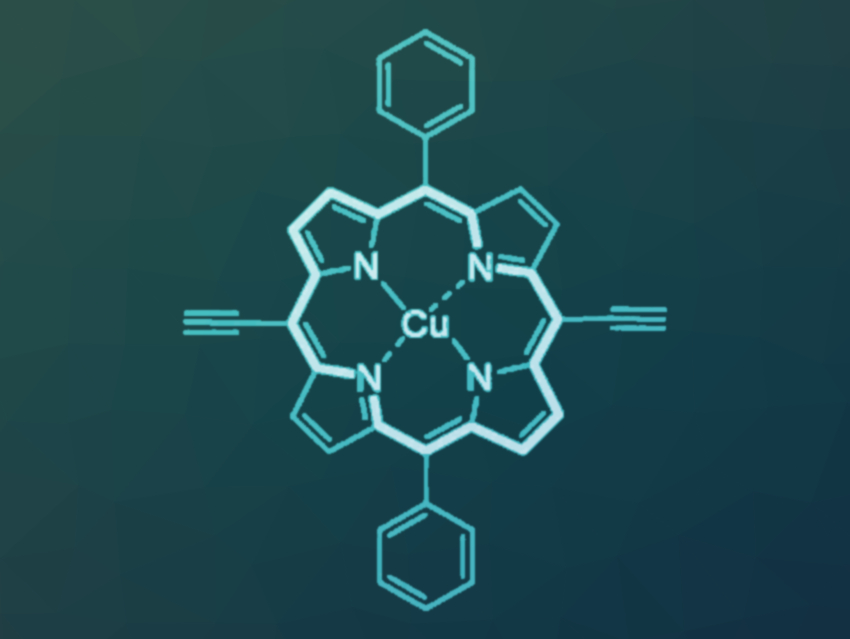Potassium-ion batteries (KIBs) have the potential to be used as next-generation sustainable energy-storage devices. Potassium is earth-abundant and cheap, while the commonly used lithium could become rare and increasingly expensive. Organic materials might be used in electrodes for KIBs. However, the high solubility and low electronic conductivity of organic molecules hinder the development of stable organic electrodes with high energy density and fast charge capability for this type of battery.
Ping Gao, Enhui Liu, Xiangtan University, China, and colleagues have developed a porphyrin-based copper complex ([5,15‐bis(ethynyl)‐10,20‐diphenylporphinato]copper(II) or CuDEPP, pictured) to be used as the active material in a cathode for potassium batteries. This complex has a structure similar to natural molecules such as chlorophyll and hemoglobin. Its porphyrin ligand was synthesized from 5-phenyldipyrromethane and 2-trimethylsilylprop-2-ynal and deprotected using tetrabutylammonium fluoride (TBAF) to give the desired product.
The electrochemical polymerization of the ethynyl functional groups in CuDEPP results in a self‐stabilization of the cathode material. The electrochemical energy storage is realized via a four-electron transfer (pictured below). A porphyrin-based organic potassium battery using this cathode material shows a highly reversible capacity of 181 mAh g–1 at an average voltage of 2.8 V (vs. K+/K) and stable cycling performance up to several hundreds of cycles. This work highlights the potential of porphyrin complexes for sustainable electrochemical energy storage.

- Copper Porphyrin as a Stable Cathode for High Performance Rechargeable Potassium Organic Batteries,
Ping Gao, Shenshen Lv, Jingjun Yuan, Zhi Chen, Hongbo Shu, Xiukang Yang, Enhui Liu, Songting Tan, Mario Ruben, Zhirong Zhao-Karger, Maximilian Fichtner,
ChemSusChem 2020.
https://doi.org/10.1002/cssc.202000425


